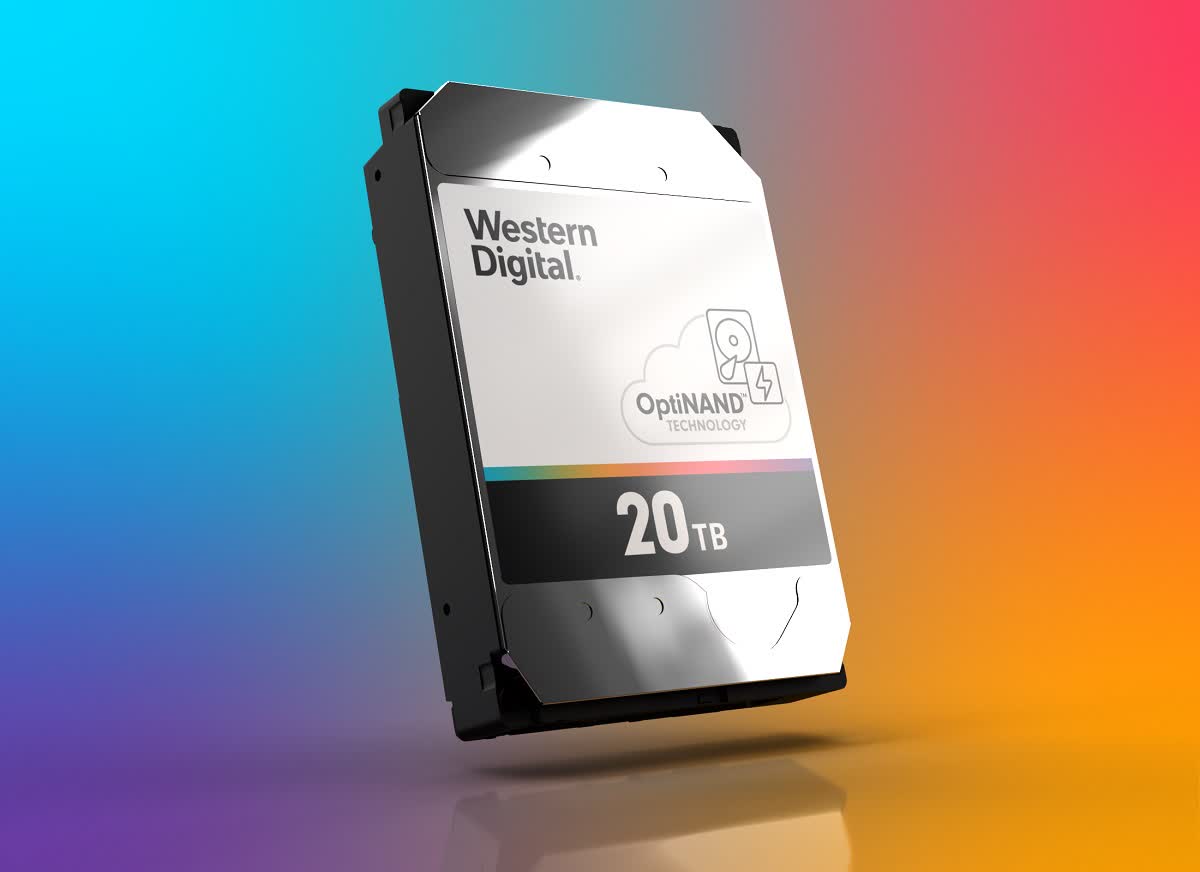Western Digital talks about the road to 30TB hard drives
Something to look forward to: Just a couple of weeks later Western Digital released its first 20-terabyte hard drive, its CEO spoke at a conference where he laid out some of its hereafter plans. They include details on the technology Western Digital plans to use in the future to push storage chapters even further.
At the annual Wells Fargo TMT Summit this week, ane of the subjects Western Digital CEO David Goeckeler spoke about was the visitor'due south approach to technologies like OptiNAND, SRM, and HAMR. Goeckeler considers all 3 crucial to increasing density and getting to e'er-larger difficult drives.
Last year, Seagate shipped out its 20TB difficult drives, which use HAMR to select information center customers. Concluding month, WD released its own 20TB drives to full general consumers (currently sold out) with OptiNAND technology, which uses flash memory to store metadata.
"We're heavily invested in HAMR," he said. "HAMR is going to be existent, it'due south going to be in the future," Goeckeler said.
HAMR will increment the longevity of hard drives only will too crave a lot of software work and won't be commercialized for several years.

WD and Seagate both desire to get to 30TB past the center of the decade, and Seagate intends to accomplish 100TB past 2030. Goeckeler thinks WD already has the stepping stones to get there with ePMR (free energy-assisted storage), SMR (another density-increasing method), and OptiNAND.
"I think SMR is going to go more than real and customers are getting more than existent about information technology," the WD boss said.
One of those steps could be 22TB difficult drives in 2022. WD's electric current high-capacity HDD uses nine platters, with 2.2TB per platter. Goeckeler says they can release one with a 10th platter.
Ane engineering science Goeckeler doesn't mention is MAMR. Western Digital proposed the applied science in 2022, saying it could allow for 40TB hard drives past 2025.
Source: https://www.techspot.com/news/92499-western-digital-talks-about-road-30tb-hard-drives.html
Posted by: stoverthistarry.blogspot.com


0 Response to "Western Digital talks about the road to 30TB hard drives"
Post a Comment